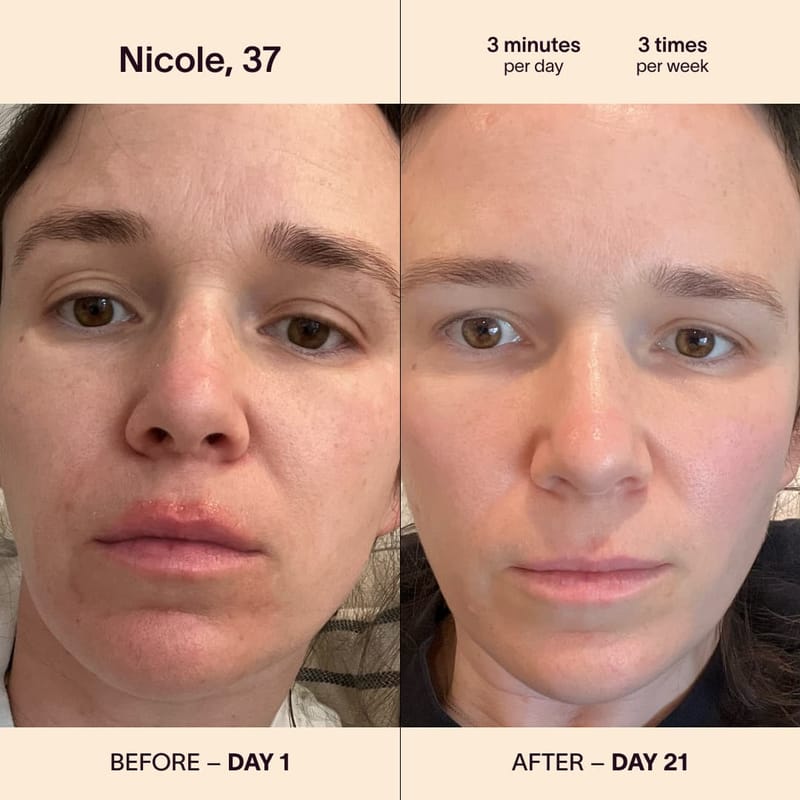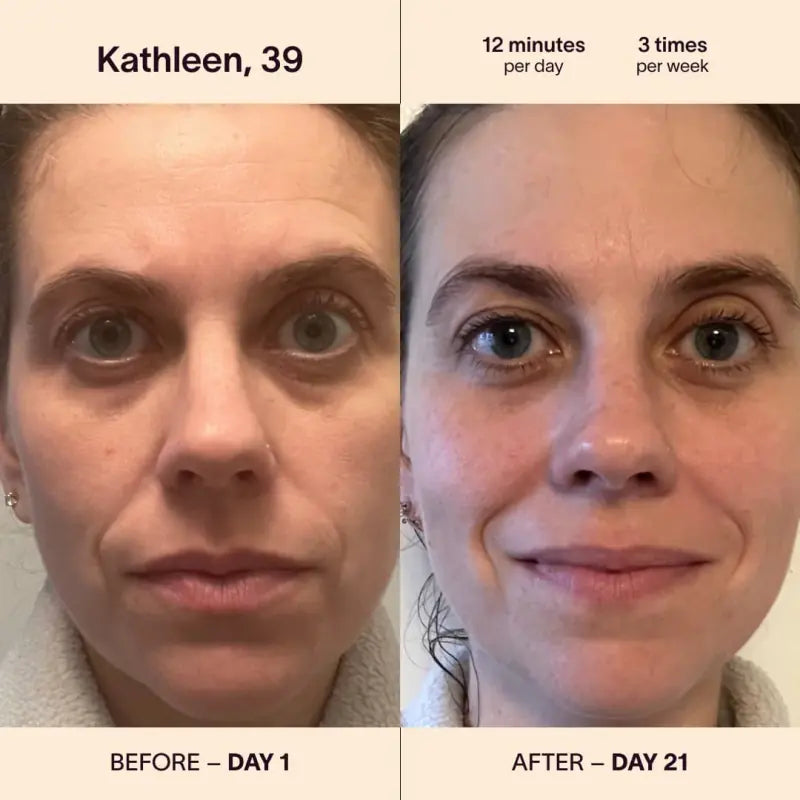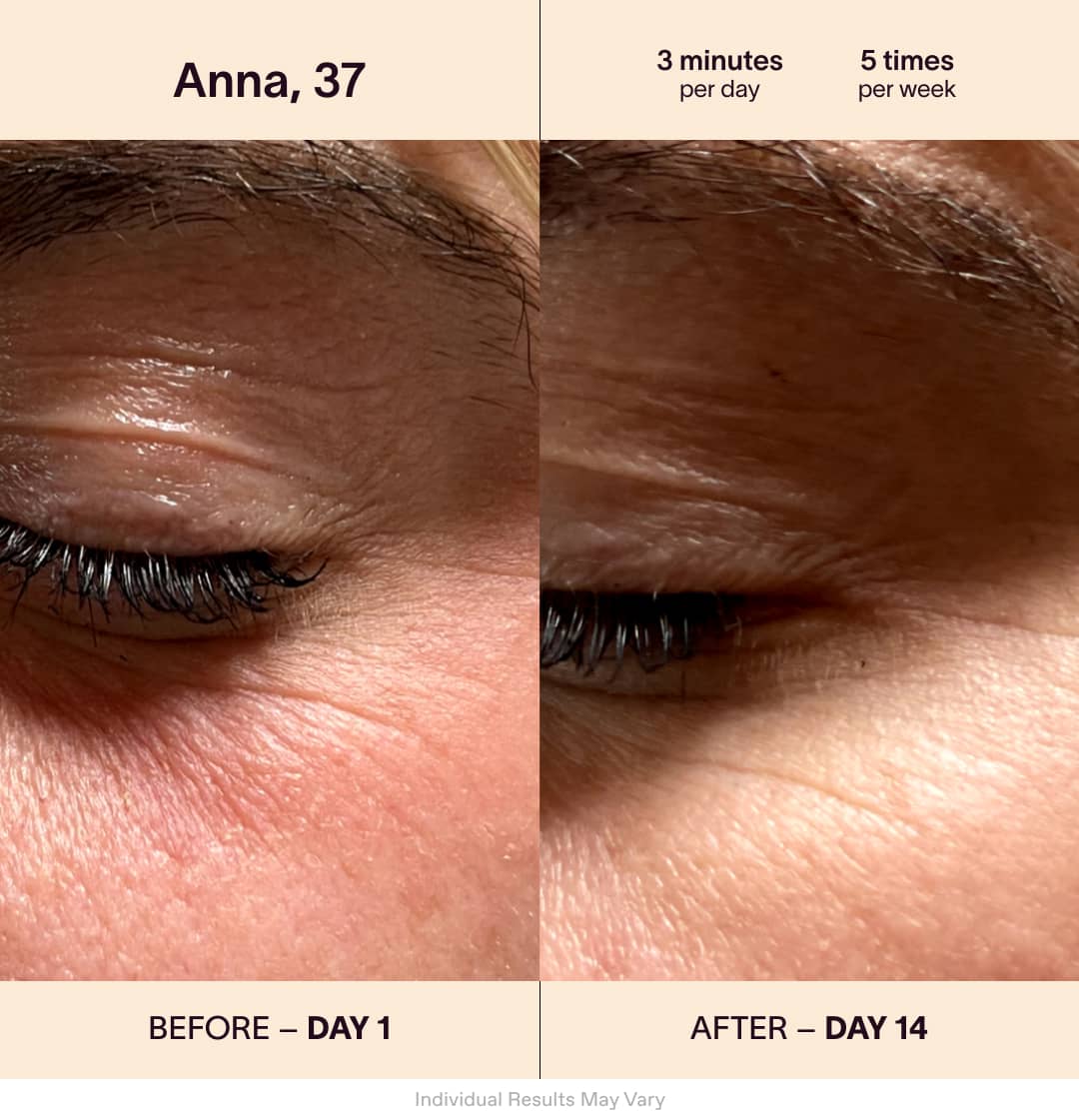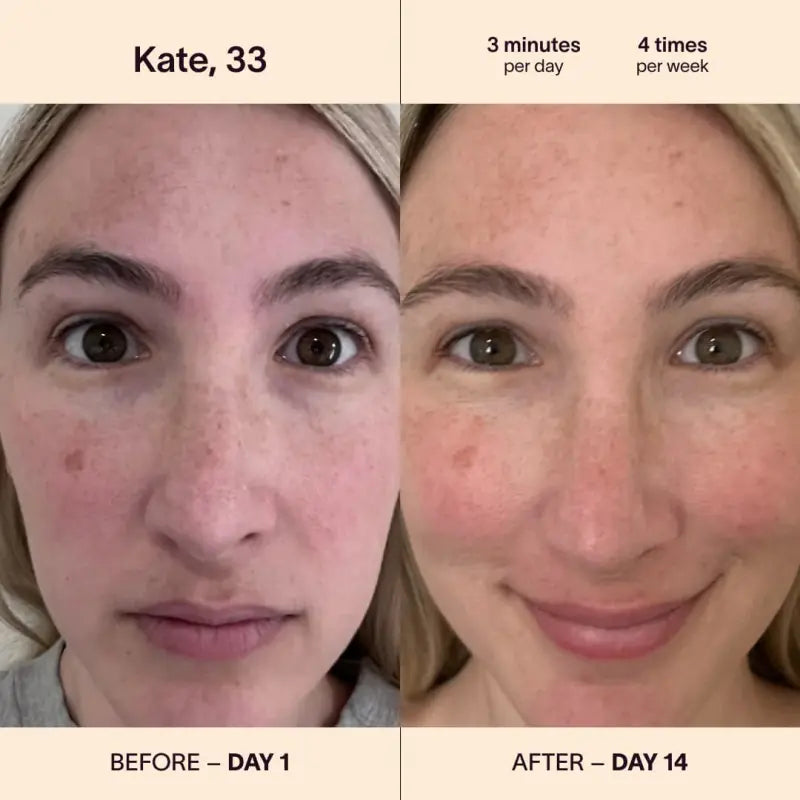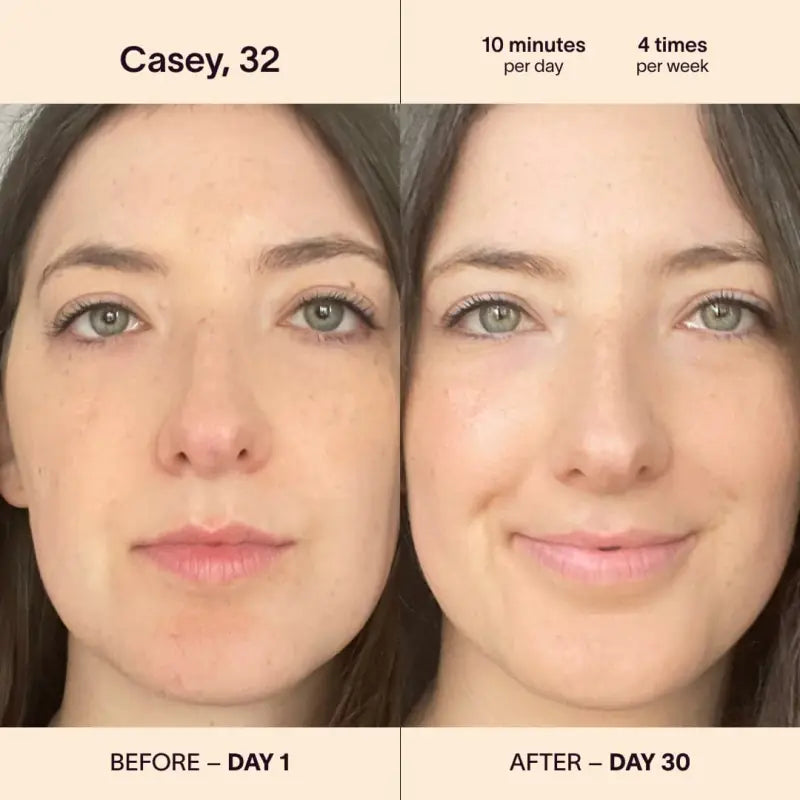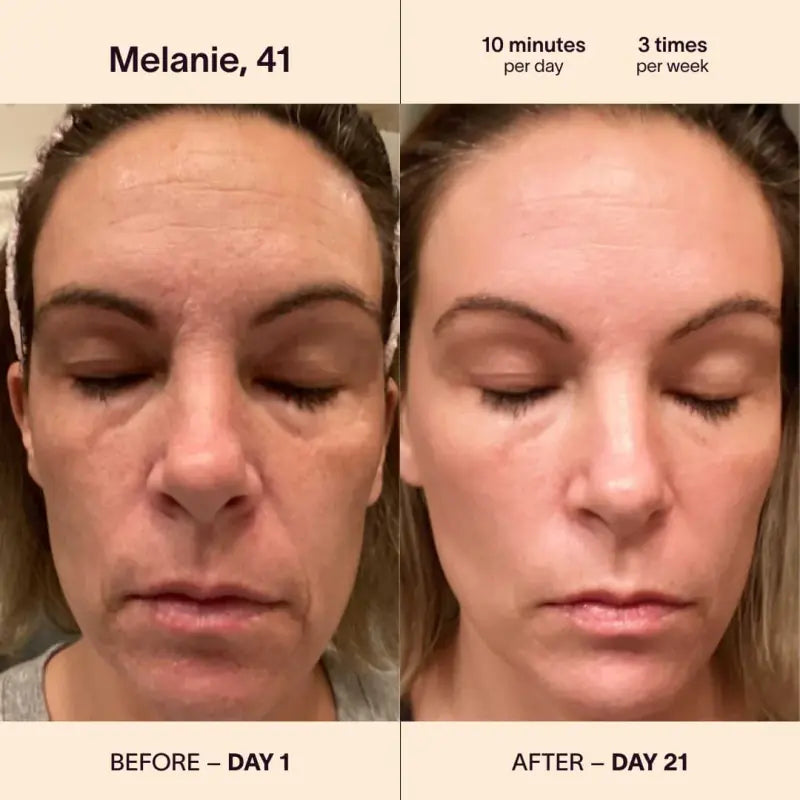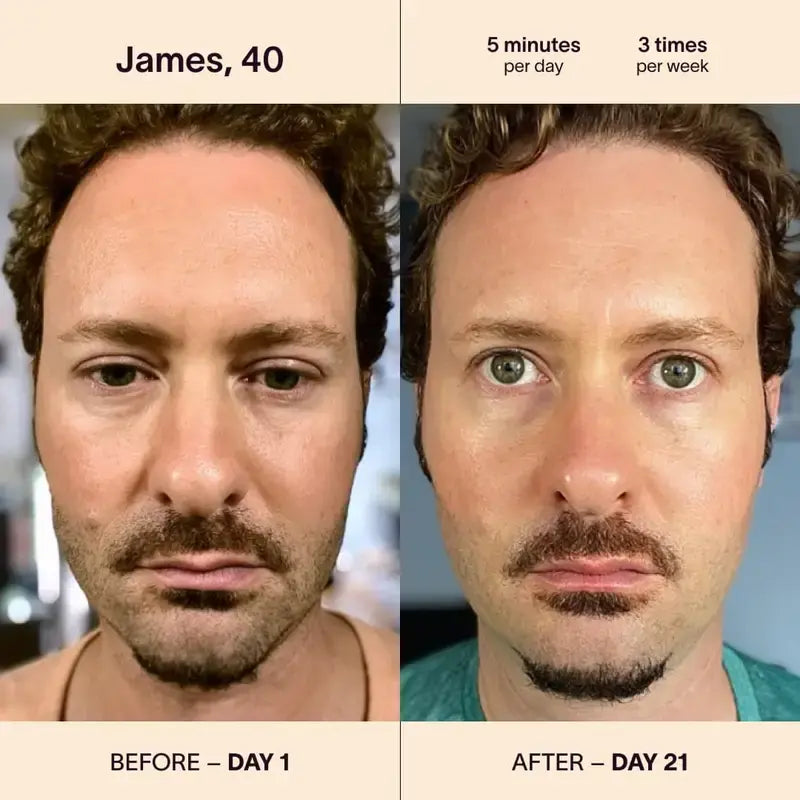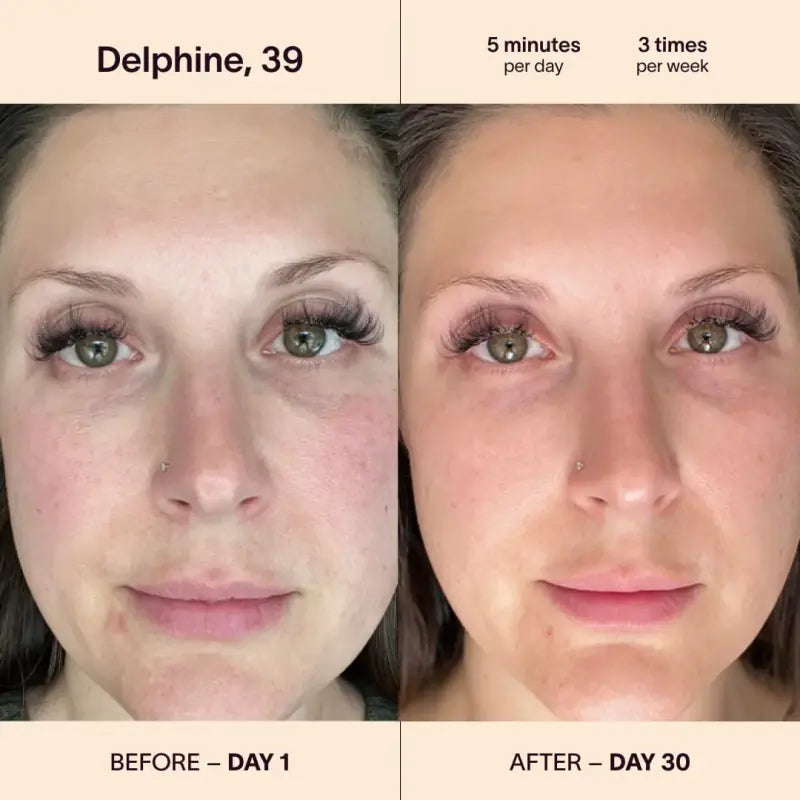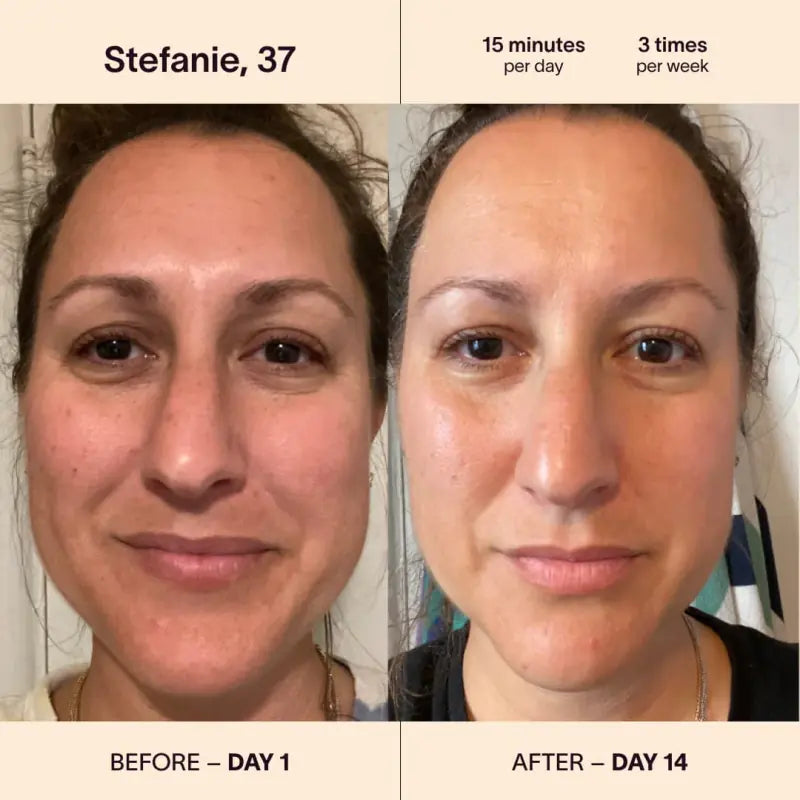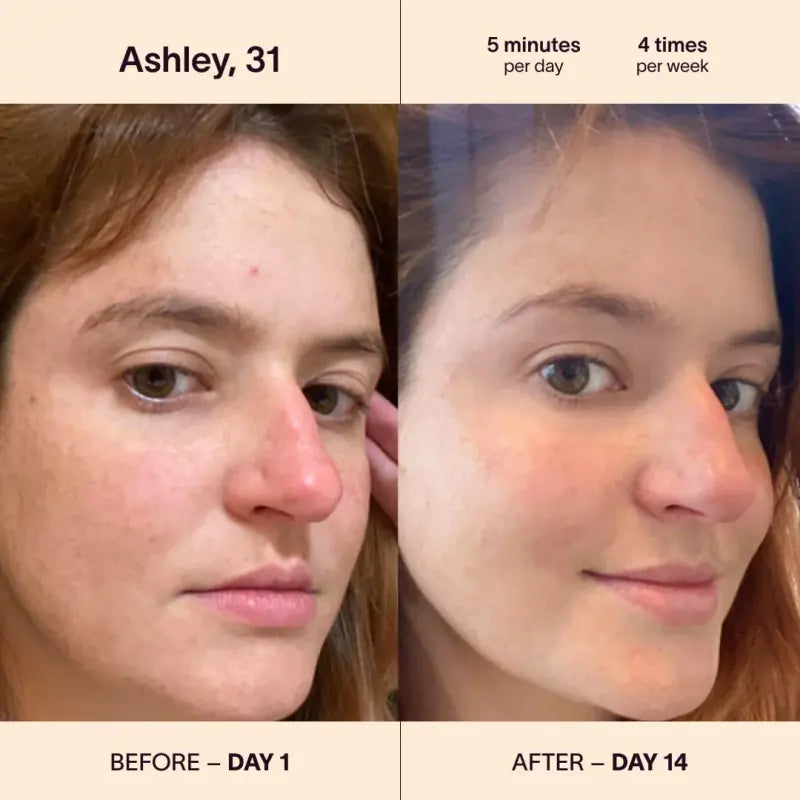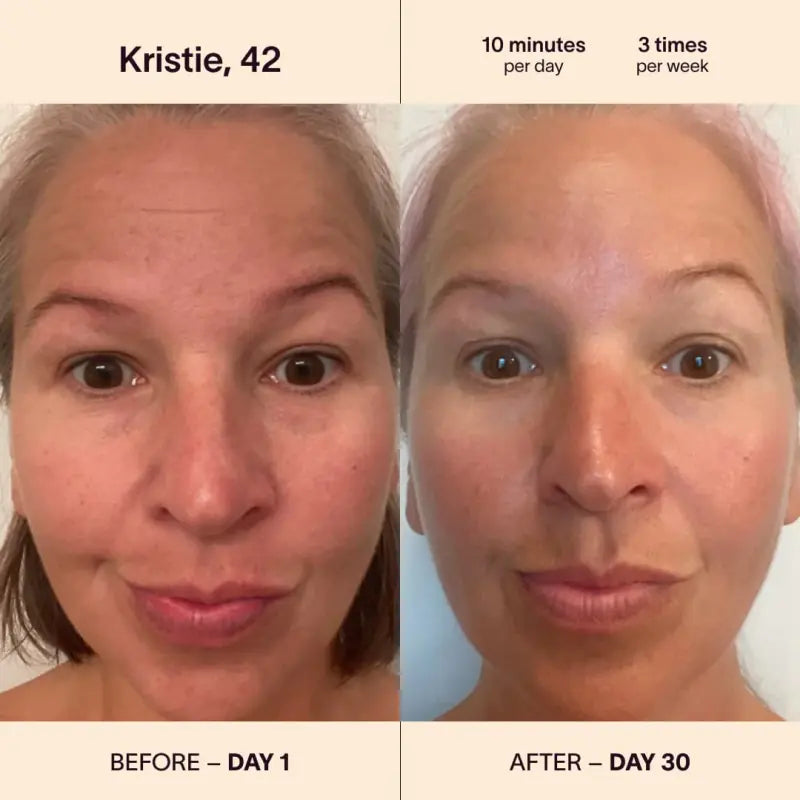Eczema, also known as atopic dermatitis, significantly impacts the quality of life of those affected. It's a chronic condition characterized by itchy, inflamed, and sometimes blistering skin. This continuous discomfort can lead to sleep disturbances, emotional distress, and social embarrassment. Moreover, the constant cycle of itching and scratching can further damage the skin, leading to a worsening of symptoms. The burden of eczema goes beyond just physical discomfort, affecting mental health and overall well-being.
Red light therapy for eczema has emerged as a promising solution for those struggling with
this chronic skin condition.
The Science Behind Red Light Therapy
Red light therapy's journey from an experimental technology to a mainstream treatment option is fascinating. Its roots can be traced back to NASA's research in the 1990s, where it was initially used to promote plant growth in space. Scientists soon discovered its potential for wound healing and tissue regeneration in astronauts. Over time, the technology has been refined and adapted for various medical and cosmetic purposes, including the treatment of skin conditions like eczema.
How red light therapy works is grounded in its ability to penetrate the skin and stimulate cellular activity. When red light wavelengths reach the skin cells, they boost the production of adenosine triphosphate (ATP), the energy currency of cells. This increased energy production accelerates cell repair and regeneration, reduces inflammation, and stimulates collagen production. These effects are particularly beneficial for eczema sufferers, whose skin barrier is compromised.
Red light therapy wavelengths for skin health are typically in the range of 630-660 nanometers for red light and 810-850 nanometers for near-infrared light. The specific wavelengths are chosen for their ability to penetrate different layers of the skin. While shorter wavelengths are effective for surface skin issues, longer wavelengths can reach deeper tissues. This targeted approach allows for a more effective treatment of various skin conditions, including the deeper layers affected by eczema.
Traditional light therapies, such as UV therapy, have been used for skin conditions but come with potential risks like skin aging and an increased risk of skin cancer. In contrast, red light therapy offers a safer alternative with minimal side effects. It doesn't contain UV rays and is gentle on the skin, making it a suitable option for long-term management of skin conditions, including sensitive conditions like eczema.
Eczema and Its Pathophysiology
Eczema is marked by chronic inflammation, a key factor in its symptomatology. This inflammation is not just a superficial skin issue; it's a complex biological response involving various immune cells and inflammatory mediators. These elements work together, causing the redness, swelling, and itching characteristic of eczema. The chronic nature of this inflammation means that the symptoms often persist or recur over time, requiring ongoing management.
Eczema flare-ups are a significant concern for individuals suffering from this skin condition, as these episodes can be both uncomfortable and disruptive. Trigger identification and management are key to maintaining skin health and comfort. Here's a detailed list of common triggers that can provoke eczema symptoms:
-
Allergens: Allergens like pollen, pet dander, and dust mites are notorious for triggering eczema symptoms. Individuals with eczema have sensitive skin that can react to these allergens by becoming inflamed, itchy, and irritated. Managing exposure to these allergens through regular cleaning, using allergen-reducing products, and possibly medical interventions like antihistamines can be essential steps in controlling eczema flare-ups related to these sources.
-
Irritants: Everyday substances such as soaps, detergents, and fragrances can act as irritants, worsening eczema symptoms. These products can strip the skin of its natural oils, leading to dryness and irritation. For those with eczema, it is recommended to use hypoallergenic and fragrance-free products to minimize skin distress. Additionally, wearing gloves while cleaning and avoiding products with harsh chemicals can also help manage skin reactions.
-
Climate: Eczema symptoms can be exacerbated by extreme weather conditions. Both excessively hot and cold temperatures can dry out the skin, as can environments with low humidity. Using humidifiers to maintain indoor humidity, avoiding sudden temperature changes, and moisturizing regularly can help manage these climatic effects on eczema-prone skin.
-
Stress: Emotional stress does not just affect mental health but can also lead to physical manifestations such as eczema flare-ups. Stress can weaken the immune system and trigger inflammation, worsening eczema symptoms. Techniques such as mindfulness, meditation, regular exercise, and sufficient sleep are effective ways to manage stress and thereby reduce its impact on eczema.
-
Food Allergies: Certain foods can trigger allergic reactions that cause eczema symptoms to flare up. Common culprits include dairy products, nuts, soy, and gluten. Identifying and avoiding these food allergens with the help of an allergist or a dietitian can be crucial in managing eczema related to food allergies.
-
Hormonal Changes: Hormonal fluctuations, particularly in women during phases such as menstruation, pregnancy, or menopause, can influence eczema conditions. These changes can lead to increased skin sensitivity and flare-ups. Discussing with healthcare providers about possible treatments to manage hormonal effects on the skin can be beneficial.
-
Sweat: Excessive sweating, whether from exercise or hot weather, can irritate the skin and exacerbate eczema symptoms. It is advisable to wear moisture-wicking fabrics, shower immediately after sweating, and use gentle soaps to manage irritation associated with sweat.
-
Infections: Bacterial, viral, or fungal skin infections can aggravate eczema by compromising the skin barrier and increasing inflammation. It is important to maintain good hygiene, treat any cuts or breaks in the skin promptly, and consult healthcare providers for appropriate treatments to prevent infections from worsening eczema.
-
Fabrics: Certain fabrics like wool or synthetic fibers can irritate sensitive skin and trigger eczema flare-ups. Opting for soft, breathable materials such as cotton and ensuring clothes are loose-fitting can help minimize skin irritation.
-
Environmental Pollutants: Exposure to various pollutants and chemicals in the environment can initiate eczema symptoms. Avoiding areas with high pollution levels and using protective barriers when in contact with potential irritants can help manage the impact of environmental pollutants on eczema.
The immune response in eczema patients is altered and often overactive. This heightened immune reaction can exacerbate skin inflammation and damage. Eczema sufferers often have higher levels of certain antibodies, indicating an immune system in a constant state of alert. This overactive immune response can make the skin more reactive to common triggers, worsening the condition.
Benefits of Red Light Therapy for Eczema
A significant benefit of red light therapy for eczema is its anti-inflammatory effects. This therapy helps reduce skin inflammation by decreasing pro-inflammatory cytokines, substances that signal inflammation in the body. By reducing these inflammatory signals, red light therapy can alleviate the redness, swelling, and itching associated with eczema, providing relief to sufferers.
Eczema and skin barrier repair with red light therapy is a vital area of benefit. As said before, the therapy promotes the production of collagen and elastin, essential components of healthy skin. By strengthening the skin's barrier function, red light therapy helps retain moisture and provides a defense against environmental irritants. This improved barrier function is crucial for eczema patients, as it helps reduce flare-ups and maintains skin health.
Red light therapy has emerged as a promising alternative to traditional eczema treatments, such as steroids and immunosuppressants. This method offers a variety of benefits, making it an attractive option for those seeking relief from skin conditions without the drawbacks associated with more conventional therapies:
-
No Thinning of the Skin: Unlike steroids, red light therapy does not cause skin thinning. This makes it a safer option for long-term use, as the integrity and structure of the skin are preserved. Many patients are concerned about the aesthetic and health impacts of thinner skin, which can be more prone to damage and wounds. Red light therapy sidesteps this issue, offering a treatment that maintains skin robustness while managing symptoms.
-
No Systemic Side Effects: Red light therapy does not introduce the systemic side effects commonly associated with immunosuppressants. Drugs that suppress the immune system can leave patients vulnerable to infections and other health problems. By using light to treat eczema, this method avoids altering the body's natural immune responses, providing a focused treatment confined to the affected areas only.
-
Suitable for Long-Term Use: Since red light therapy does not carry the risks associated with prolonged steroid use, such as hormonal imbalances and increased susceptibility to infections, it is suitable for ongoing treatment. This is particularly beneficial for chronic eczema sufferers who need continuous care to manage their condition effectively, making red light therapy a viable long-term solution.
-
Non-Invasive: Unlike some traditional treatments that involve injections or systemic medication, red light therapy is entirely non-invasive. This attribute reduces the treatment's risk and makes it an appealing choice for patients who are uncomfortable with more aggressive approaches like injections or surgical options.
-
No Tolerance Build-Up: One of the significant advantages of red light therapy is that the body does not build up a tolerance to it. This is crucial for maintaining the effectiveness of the therapy over time, as many medications lose their efficacy as the body adapts to them. With red light therapy, patients can expect consistent results even with extended use.
-
Complements Other Treatments: Red light therapy can be used alongside other treatments without interfering with their efficacy. This compatibility is especially useful in comprehensive treatment plans that include a combination of therapies. It allows patients to tailor a multifaceted approach that addresses their specific symptoms and conditions effectively.
-
Safe for All Ages: Safety is a paramount concern in any treatment, and red light therapy is safe for individuals of all ages, including children and the elderly. This wide safety margin makes it a versatile option for families looking for solutions that suit members ranging from young children to older adults.
-
Improves Overall Skin Health: Beyond treating eczema, red light therapy also enhances the overall health, texture, and appearance of the skin. Patients often notice improved skin tone and reduced inflammation, which contribute to a healthier look and feel. This broad benefit underscores red light therapy's role not just as a disease-specific treatment but as a contributor to general skin care.
Managing eczema with red light therapy is a promising approach for long-term symptom control. By addressing the underlying causes of inflammation and skin barrier dysfunction, red light therapy not only treats the immediate symptoms but also contributes to the overall health and resilience of the skin. This therapy can be a valuable part of a comprehensive eczema management plan, offering a sustainable and effective way to control symptoms and improve quality of life.
Practical Aspects of Red Light Therapy Treatment
When considering at-home vs in-clinic red light therapy, it's important to understand the differences and benefits of each. In-clinic treatments are administered by practitioners and typically use more powerful devices, ensuring a controlled and effective dose of light. At-home devices, on the other hand, offer convenience and privacy, although they may be less powerful than their in-clinic counterparts. Both options have their merits, and the choice often depends on personal preferences, severity of eczema, and lifestyle considerations.
The effectiveness of this therapy depends significantly on adhering to recommended guidelines for both the duration and frequency of treatment sessions. Here are the essential components for optimal therapy management:
-
Typical Session Length: The duration of each red light therapy session typically ranges from 10 to 20 minutes. This time frame is considered optimal for penetrating the skin to stimulate cellular repair and boost collagen production, without causing discomfort or adverse effects. Shorter sessions may not provide sufficient exposure to effect change, while longer sessions do not necessarily increase benefits and may increase the risk of skin irritation. Therefore, sticking to this duration maximizes efficacy and safety.
-
Recommended Frequency: For red light therapy to be effective, it is generally recommended that sessions occur several times per week. This frequency helps maintain a continuous stimulus for skin healing and rejuvenation, allowing for gradual improvement over time. Most protocols suggest between three to five sessions per week, depending on the severity of the condition and the body's response to treatment. This regularity helps establish a routine that supports sustained results, balancing treatment impact with recovery time.
-
Customization: Customization of red light therapy plans is crucial as individual needs and the severity of eczema can vary widely. Some individuals may require more frequent sessions to manage severe symptoms, while others might benefit from a less intensive schedule. Adjustments to the treatment regimen, such as varying the light intensity or altering the session length, can also be made to better cater to personal comfort levels and therapeutic goals. Personalization ensures that the treatment is not only effective but also tailored to each person’s unique condition and lifestyle.
-
Importance of Consistency: Consistency is a key factor in the success of red light therapy. Regular sessions ensure that therapeutic levels of light exposure are maintained, which is necessary for the progressive improvement of skin conditions. Interruptions in treatment can lead to setbacks in healing progress, diminishing the overall effectiveness of the therapy. Maintaining a consistent schedule helps in achieving the initial therapeutic goals and is vital for sustaining the improvements over time.
Customizing red light therapy to individual needs is crucial for optimal results. Factors such as skin type, eczema severity, and individual response to treatment can influence the therapy's effectiveness. Some individuals might need more frequent sessions, while others may respond well to less intensive treatment. Consulting with a healthcare professional can help in determining the most suitable treatment plan.
Red light therapy is known for its high safety profile. Unlike some other forms of light therapy, as said before, it does not emit UV rays and is generally well-tolerated by most individuals. Side effects are rare and usually mild, including temporary redness or irritation at the treatment site. However, it's important for individuals, especially those with photosensitive skin conditions, to discuss with a healthcare provider before starting red light therapy.
Integrating Red Light Therapy into Eczema Care
Incorporating red light therapy into eczema care is most effective when combined with other treatments and lifestyle changes. Complementary therapies such as moisturizing, using mild skin cleansers, and avoiding known irritants can enhance the benefits of red light therapy. Additionally, lifestyle modifications like stress management, a balanced diet, and avoiding extreme temperatures can play a significant role in managing eczema more effectively. This holistic approach ensures comprehensive care for eczema sufferers.
Educating patients about red light therapy and its role in eczema treatment is essential. Individuals need to understand how the therapy works, what to expect during sessions, and realistic outcomes. Managing expectations is crucial, as red light therapy is not a quick fix but a part of ongoing eczema management. Clear communication about the therapy's benefits and limitations helps patients stay informed and engaged in their treatment plans.
Regular monitoring of eczema symptoms is vital when undergoing red light therapy. Tracking progress allows for adjustments in treatment intensity, frequency, and duration. It's essential to adapt the therapy to the changing needs of the skin, ensuring the most effective and personalized care. Patients should maintain regular check-ins with their healthcare providers to discuss their progress and make any necessary adjustments to their treatment plan.
The future of eczema treatment is bright, with red light therapy leading the way as a groundbreaking innovation in dermatological care. This therapy represents a shift towards more holistic, non-invasive treatments, offering a blend of efficacy and safety that is not always found in traditional eczema treatments. As research advances, we can expect to see further refinement in red light therapy techniques, making them even more effective and accessible to a broader range of patients.
Red light therapy is not just a medical advancement; it's a tool that empowers patients. It offers an alternative to those who may have struggled with the side effects of conventional treatments or who are seeking a more natural approach to skincare. This therapy puts control back into the hands of the patients, allowing them to manage their eczema symptoms more independently and effectively. With the advent of
at-home red light therapy devices, it's becoming easier for patients to incorporate this treatment into their daily lives, providing a sense of autonomy and empowerment in their journey to skin health.









